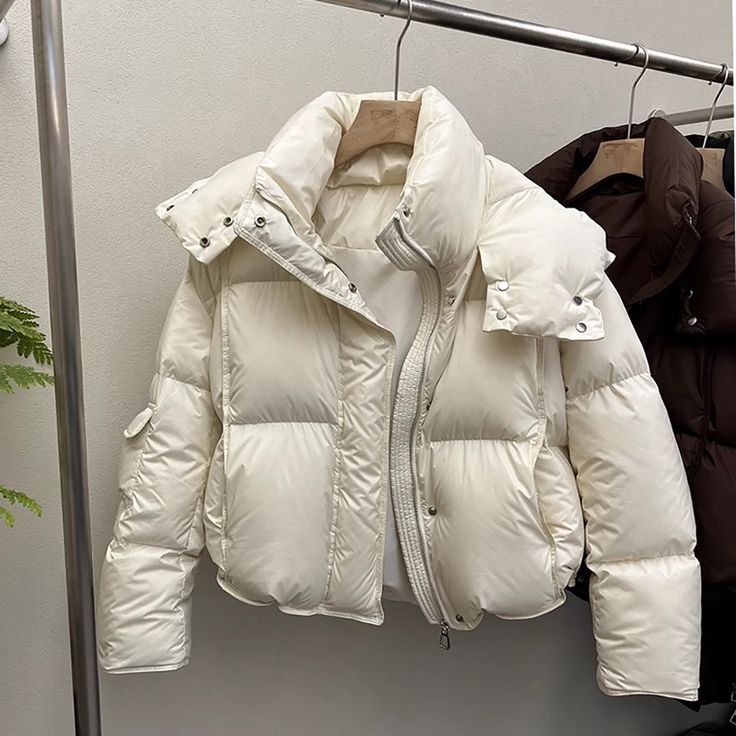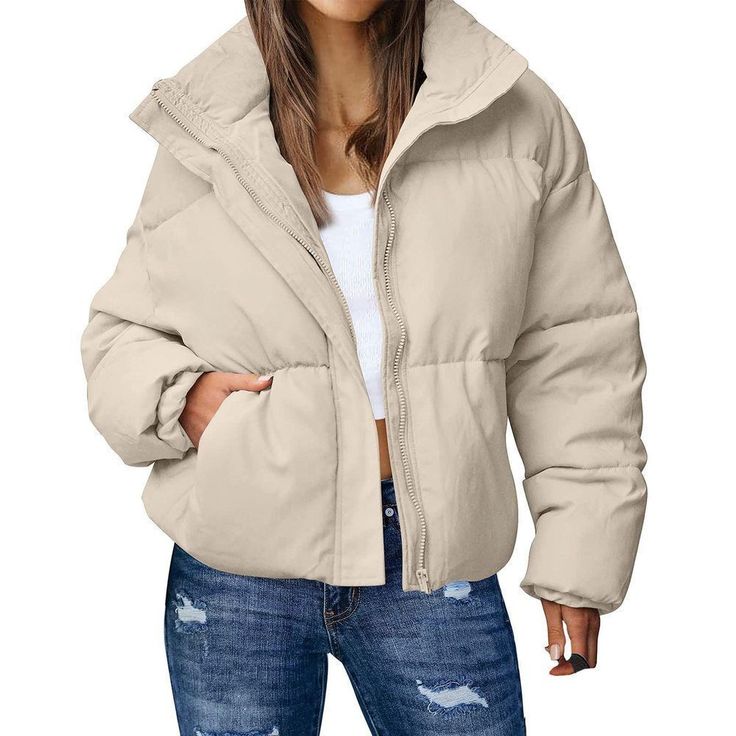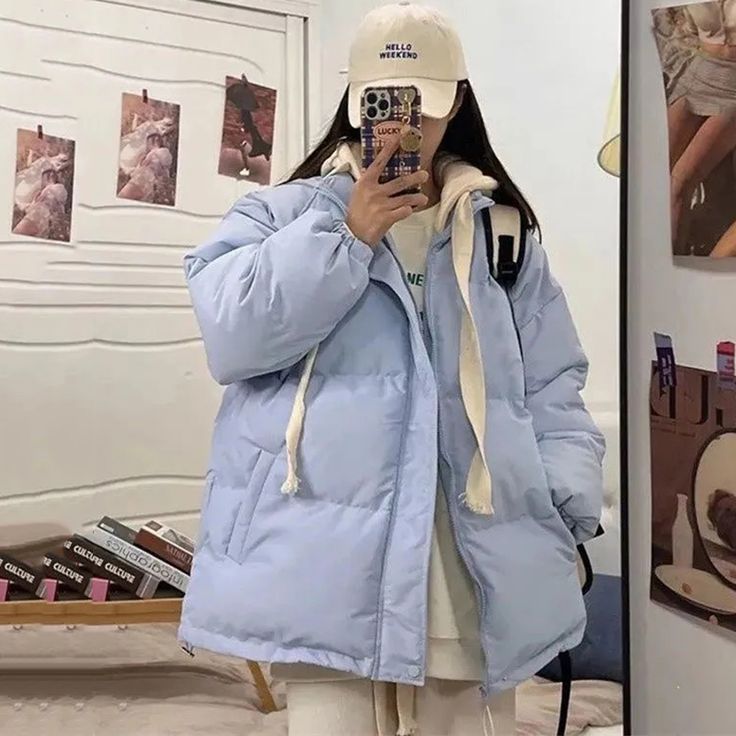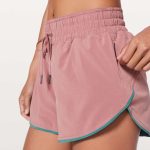As winter approaches, the quest for the perfect winter jacket becomes a priority for many. With temperatures dropping, it’s essential to find a thick winter jacket that not only keeps you warm but also complements your personal style. The right jacket should balance functionality, durability, and aesthetics. This comprehensive guide outlines essential tips for choosing a thick winter jacket, helping you navigate through various options and styles while making an informed decision that suits your needs.

Understanding Insulation: Types and Benefits
When selecting a thick winter jacket, understanding insulation types is vital. Insulation is the core feature that keeps your body warm by trapping heat. The two primary types of insulation are down and synthetic.
Down insulation consists of the soft, fluffy undercoating of ducks or geese. This material offers exceptional warmth-to-weight ratio, making it lightweight yet incredibly efficient at retaining heat. A down jacket is particularly suitable for dry, cold climates as it performs best when kept dry. In regions with higher humidity or the potential for rain, down can lose its insulating properties if it becomes wet, which is where synthetic insulation comes into play.
Synthetic insulation, on the other hand, mimics the properties of down using man-made materials, often polyester. It retains heat well, even when damp, which makes it an excellent choice for variable weather or activities that might involve moisture. When choosing a thick winter jacket, consider where and how you’ll be using it. For instance, if you spend significant time outdoors, a synthetic option may be the better choice for its resilience and ability to maintain warmth in wet conditions.
Fit and Layering: Finding the Right Size
A thick winter jacket should fit comfortably and allow for layers beneath without feeling constricted. When trying on jackets, pay attention to several key areas: shoulder width, sleeve length, and body length. The jacket should fit snugly at the shoulders without restricting movement. Sleek or tapered designs are trendy, but ensure you can comfortably wear a sweater underneath.
Layering plays a crucial role in maintaining warmth as well. As temperatures fluctuate throughout the day, having the ability to add or remove layers can enhance comfort. For colder days, consider how much space you’ll need for a base layer and mid-layer—a thermal top or fleece jacket, for example. Always test the jacket with the intended layers. Raise your arms above your head to see if the hem rides up excessively; ideally, there should be enough room to accommodate movement without compromising insulation.
Another factor to keep in mind is the length of the jacket. Longer jackets can provide additional warmth and protection, especially in windy conditions, while cropped styles are modern and chic. Ultimately, the choice should reflect your style preference and functional needs.

Evaluate Weather Resistance: Understanding Fabrics
Besides insulation, the outer fabric’s weather resistance significantly impacts a jacket’s performance. Most thick winter jackets feature a shell made from materials designed to repel elements like wind, rain, and snow. Therefore, checking the jacket’s fabric is a must.
Water-resistant vs. waterproof: Many jackets claim to be water-resistant, meaning they can withstand light rain but may not hold up in heavy downpours. Conversely, a waterproof jacket features sealed seams and a coating or membrane that keeps moisture out. For those living in wetter climates or planning on outdoor adventures, investing in a waterproof jacket ensures dryness and comfort.
Additionally, look for jackets with windproof materials. A windproof shell prevents chilling winds from penetrating the fabric, which is essential for retaining warmth in severe conditions. Besides, consider breathability; jackets that balance weatherproofing with breathability allow moisture, such as sweat, to escape, making them more comfortable for active use. A good rule of thumb is to choose jackets labeled with a high waterproof rating and a breathable membrane, ensuring optimal protection.
Style Matters: Choose the Look That Fits You
A thick winter jacket does not need to sacrifice style for warmth. Designers have merged fashion and function, leading to stylish options that cater to various tastes. Whether you prefer classic, sporty, or contemporary designs, it’s essential to select a style that resonates with your wardrobe and lifestyle.
Classic styles: Such as the parka or trench coat, have timeless appeal. They often feature a commitment to warmth, with longer cuts and effective insulation, making them popular choices for both urban and rural environments. Look for details like faux fur-lined hoods or tailored fits to elevate the overall aesthetic.
Sporty and casual options: Incorporate functionality and ease, often favoring mobility over intricate details. These jackets suit activities like skiing, hiking, or simply running errands in cold weather. Opt for vibrant colors or unique patterns that showcase your personality.
Trendy contemporary jackets feature bold cuts, unconventional patterns, or unique materials. Brands continuously innovate in this space, creating eye-catching designs that redefine typical winter wear. When choosing a stylish jacket, remember that comfort and versatility should harmonize with your fashion choices, ensuring you feel confident and warm.

Functionality and Features: Pockets, Hoods, and More
In addition to aesthetics, consider the functionality of the jacket. Pockets, hoods, cuffs, and even special features can enhance your experience. Start with pockets; they are not just for style but also necessary for functionality. Larger exterior pockets with flaps can help keep your hands warm or provide storage for essentials while you’re out and about. Look for interior pockets as well, which can help secure sensitive items like your phone or wallet.
Hoods are another essential feature. A removable or adjustable hood allows for customization based on the weather conditions. Opt for jackets with hoods that cinch tightly around your face to keep warmth in and wind out. This feature can be especially useful on blustery days or when facing snow.
Cuffs and hems also contribute to a jacket’s effectiveness in protecting against the cold. Look for jackets with elastic cuffs or adjustable features around the hem. Such elements prevent drafts from entering and help maintain body heat. Lastly, zippers should be robust and reliable, ideally featuring storm flaps to shield against wind and water infiltration. Carefully inspecting these details can significantly enhance your satisfaction with your winter jacket purchase.
Budgeting: Finding Quality Without Breaking the Bank
Investing in a thick winter jacket can be daunting, especially considering the price range of options available. High-quality jackets often come with a higher price tag, but you do not need to break the bank to find something effective and stylish.
Start by setting a realistic budget. Assess how frequently you’ll wear the jacket and the conditions it needs to withstand. If you live in a colder climate that necessitates consistent use, prioritizing quality may mean spending a bit more upfront for a long-lasting piece. Conversely, if you require a jacket for occasional use, you might consider options at a lower price point.
Research brands and materials. Brands known for outdoor gear often offer competitive pricing for high-quality jackets. Assess customer reviews or ratings to gauge lasting performance. Look for sales or off-season discounts, as many retailers offer substantial price reductions during the spring and summer months when winter gear is less in demand. By being strategic about your purchasing, you can find a durable, insulated jacket without compromising on quality.

Care and Maintenance: Prolonging the Life of Your Jacket
How you care for your thick winter jacket significantly influences its longevity. Follow specific care instructions if available, ensuring you treat the fabric and insulation properly to maintain performance. For down jackets, consider using special down detergents that protect the fill without stripping it of its natural oils, which assist in insulation.
When washing, opt for a gentle cycle with cold water. Avoid fabric softeners or bleach. Always air-dry your jacket, or if you must use a dryer, set it on low heat and add dryer balls to plump the insulation as it dries. Synthetic jackets typically require less maintenance, but following similar strategies enhances their lifespan.
Store your jacket properly during warmer months. Avoid compressing down jackets into tight spaces, as this can damage insulation. Instead, hang it in a cool, dry place to maintain its loftiness and prevent mold or mildew growth. Regular inspections for wear and tear will also help you proactively address any issues, ensuring that your jacket serves you well for multiple winters to come.

Conclusion: Choosing the Perfect Thick Winter Jacket
Choosing the right thick winter jacket involves more than merely picking the first option that looks appealing. It’s about understanding insulation types, evaluating weather resistance, and selecting the right fit for your layering needs. Keep style and functionality at the forefront of your decision-making process. Finally, blend budget considerations with quality, ensuring that you invest wisely in a jacket that not only enhances your winter wardrobe but also offers comfort and warmth throughout the cold months.
As winter creeps closer, take the time to research, assess, and decide on a thick winter jacket that meets your unique requirements. With the right guidance and options at your disposal, you can step out in confidence, facing the chill in style and comfort. Embrace the season without compromising on warmth or aesthetics, and look forward to enjoying all that winter has to offer!

